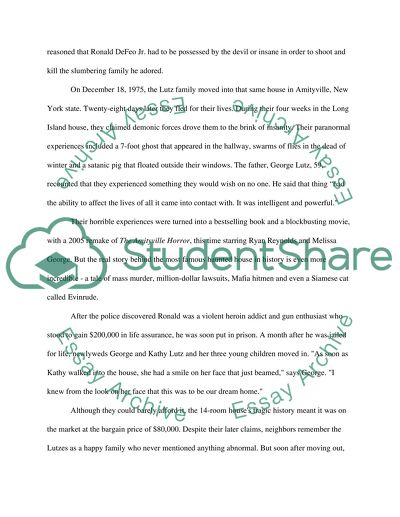Cite this document
(“The Hoax of that House of Horror: The Amityville Horror Revealed Essay”, n.d.)
Retrieved from https://studentshare.org/literature/1514372-the-hoax-of-that-house-of-horror-the-amityville-horror-revealed
Retrieved from https://studentshare.org/literature/1514372-the-hoax-of-that-house-of-horror-the-amityville-horror-revealed
(The Hoax of That House of Horror: The Amityville Horror Revealed Essay)
https://studentshare.org/literature/1514372-the-hoax-of-that-house-of-horror-the-amityville-horror-revealed.
https://studentshare.org/literature/1514372-the-hoax-of-that-house-of-horror-the-amityville-horror-revealed.
“The Hoax of That House of Horror: The Amityville Horror Revealed Essay”, n.d. https://studentshare.org/literature/1514372-the-hoax-of-that-house-of-horror-the-amityville-horror-revealed.


